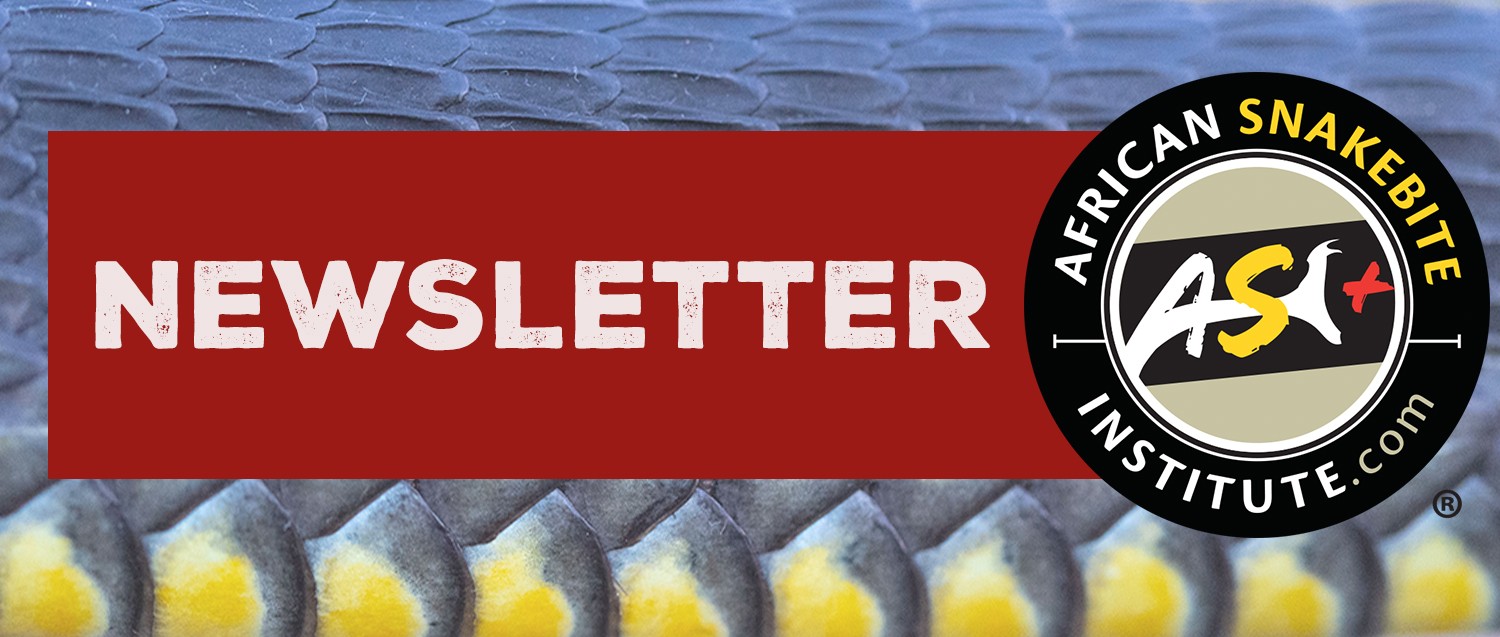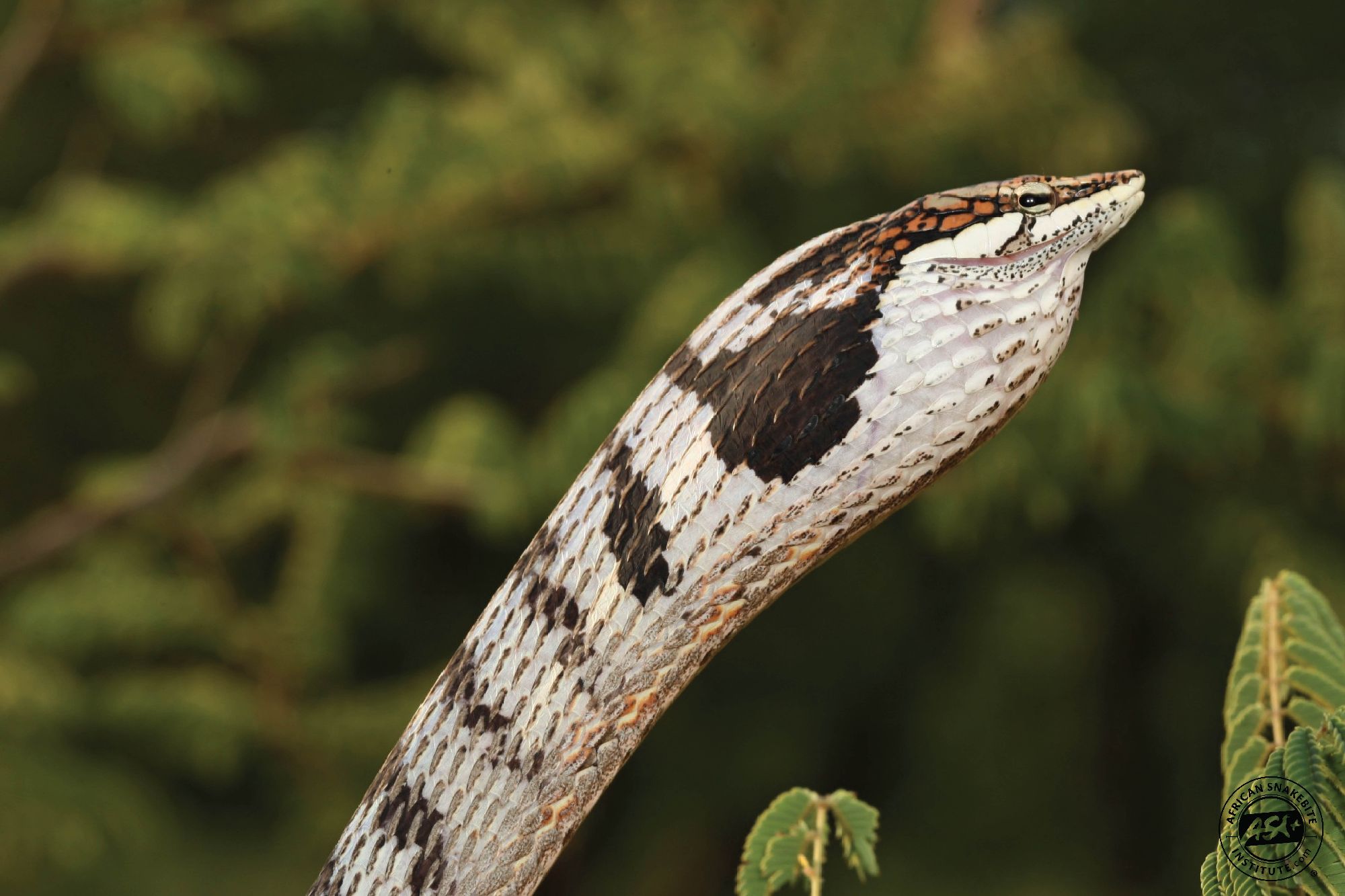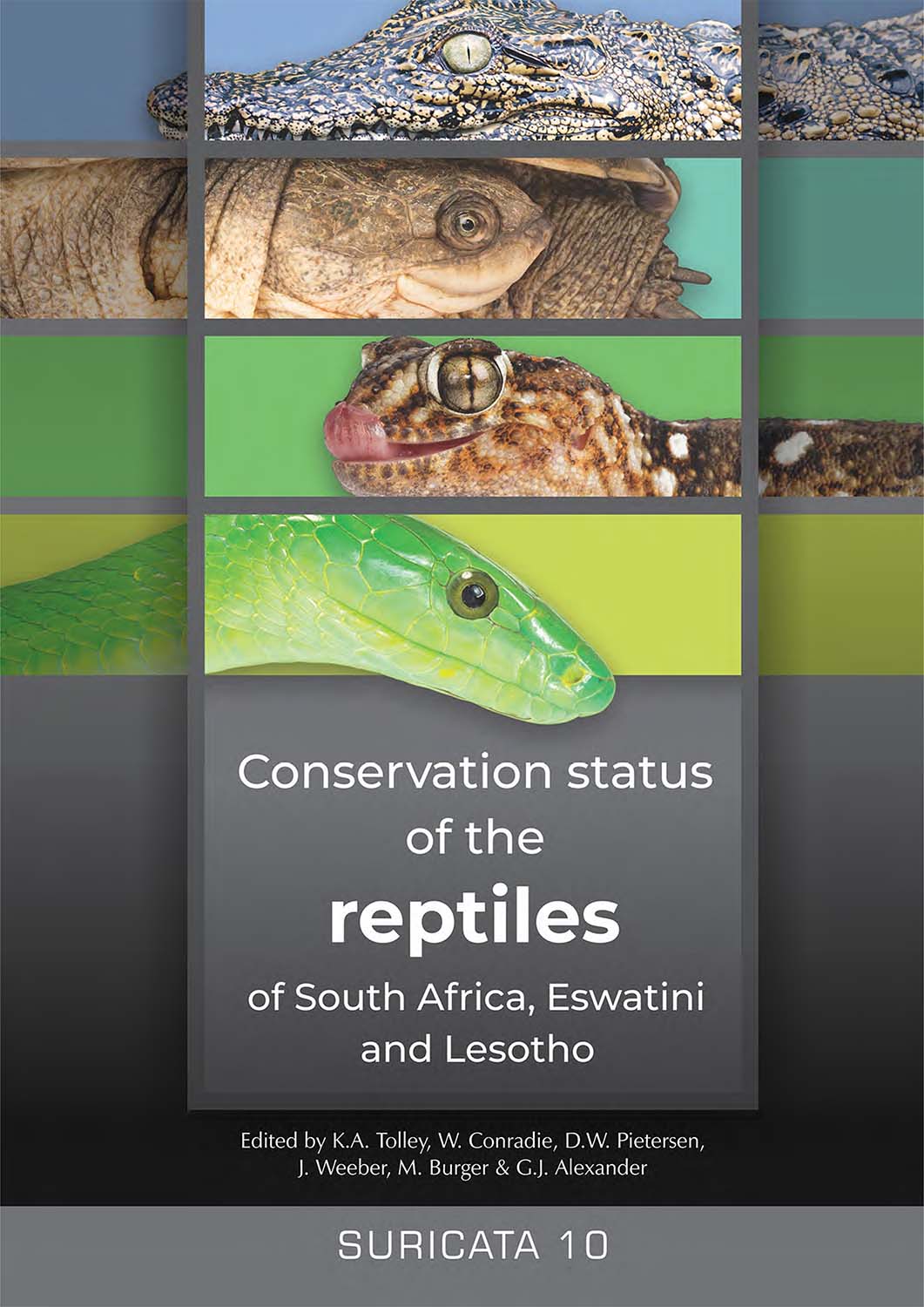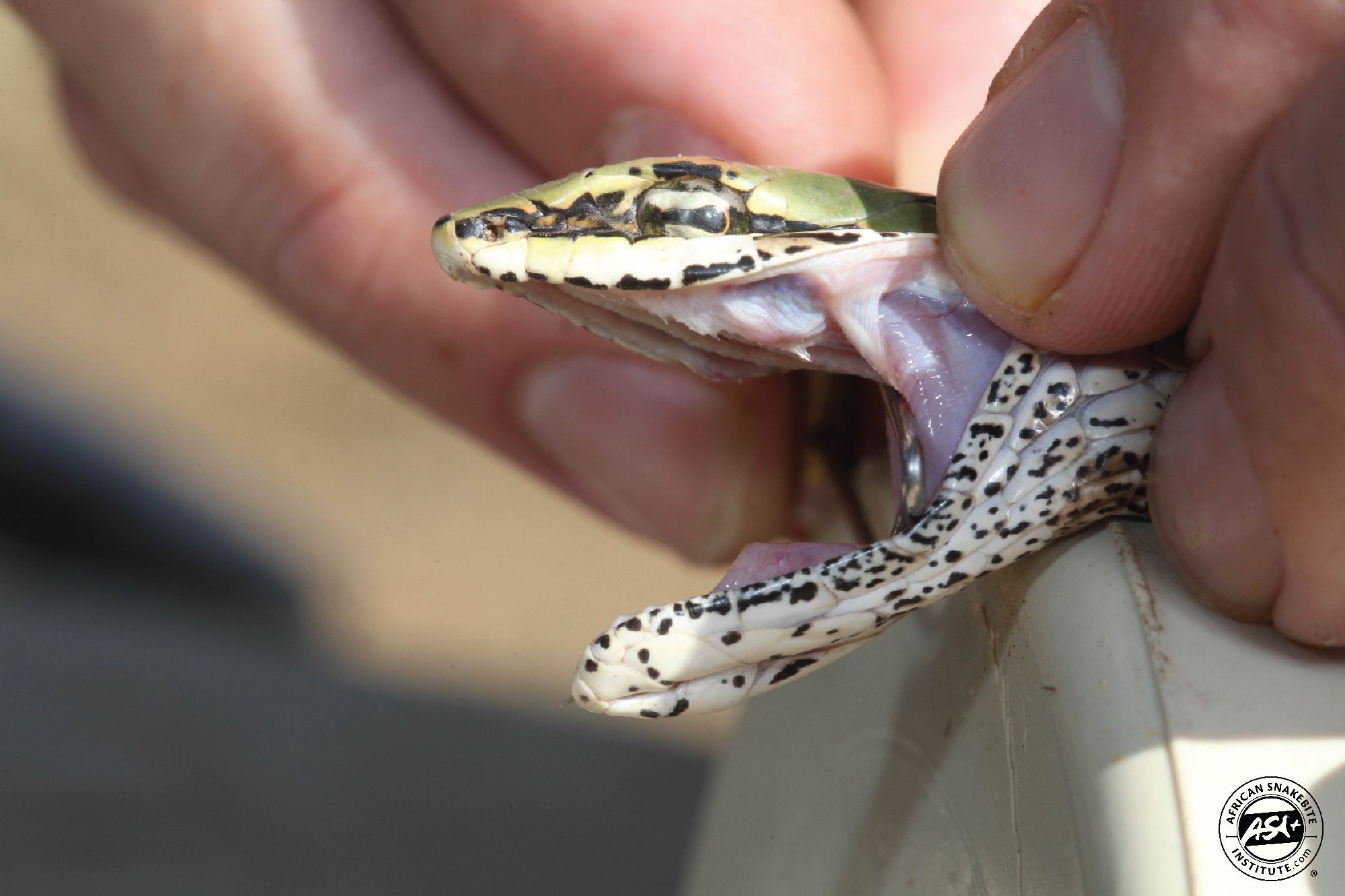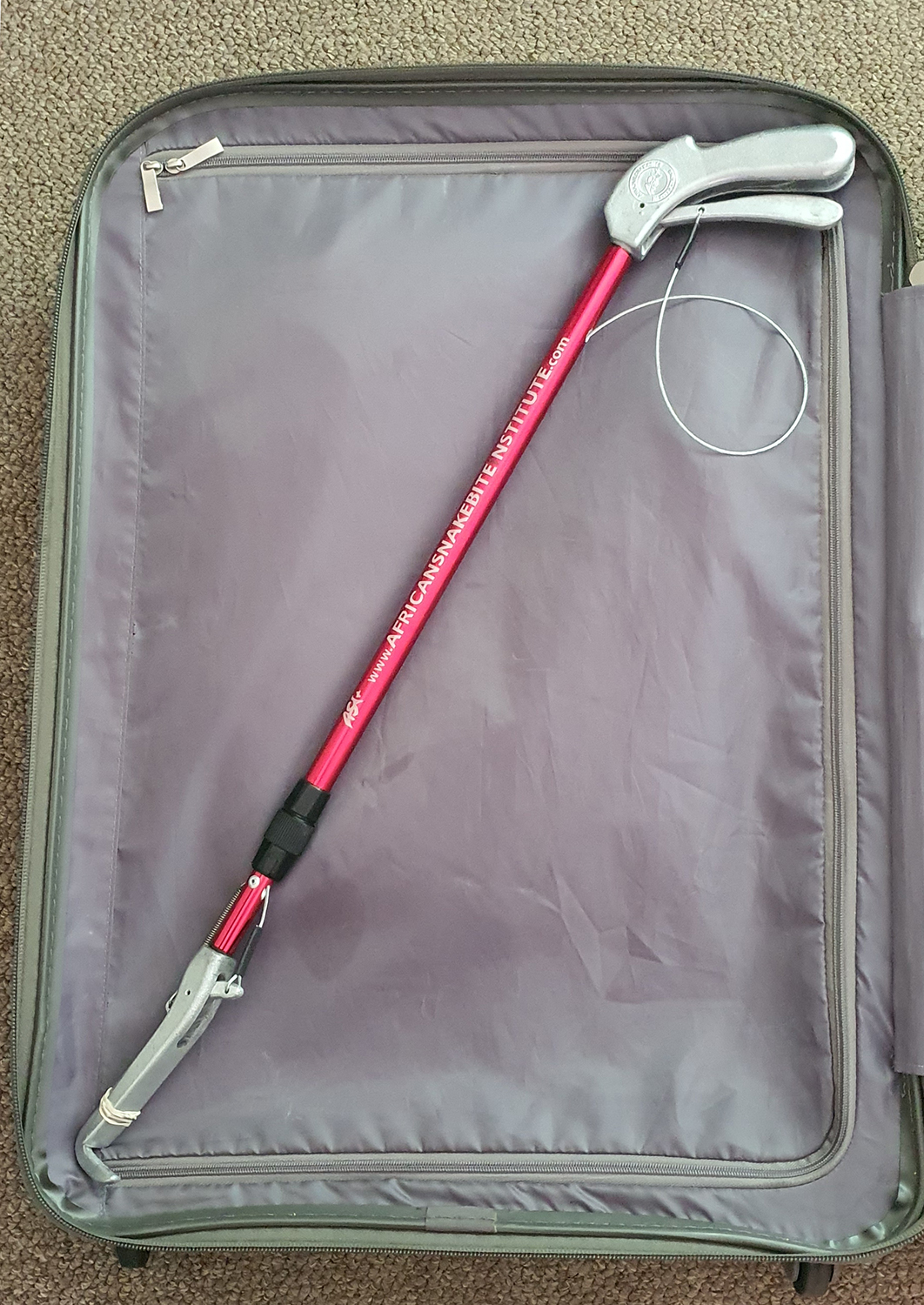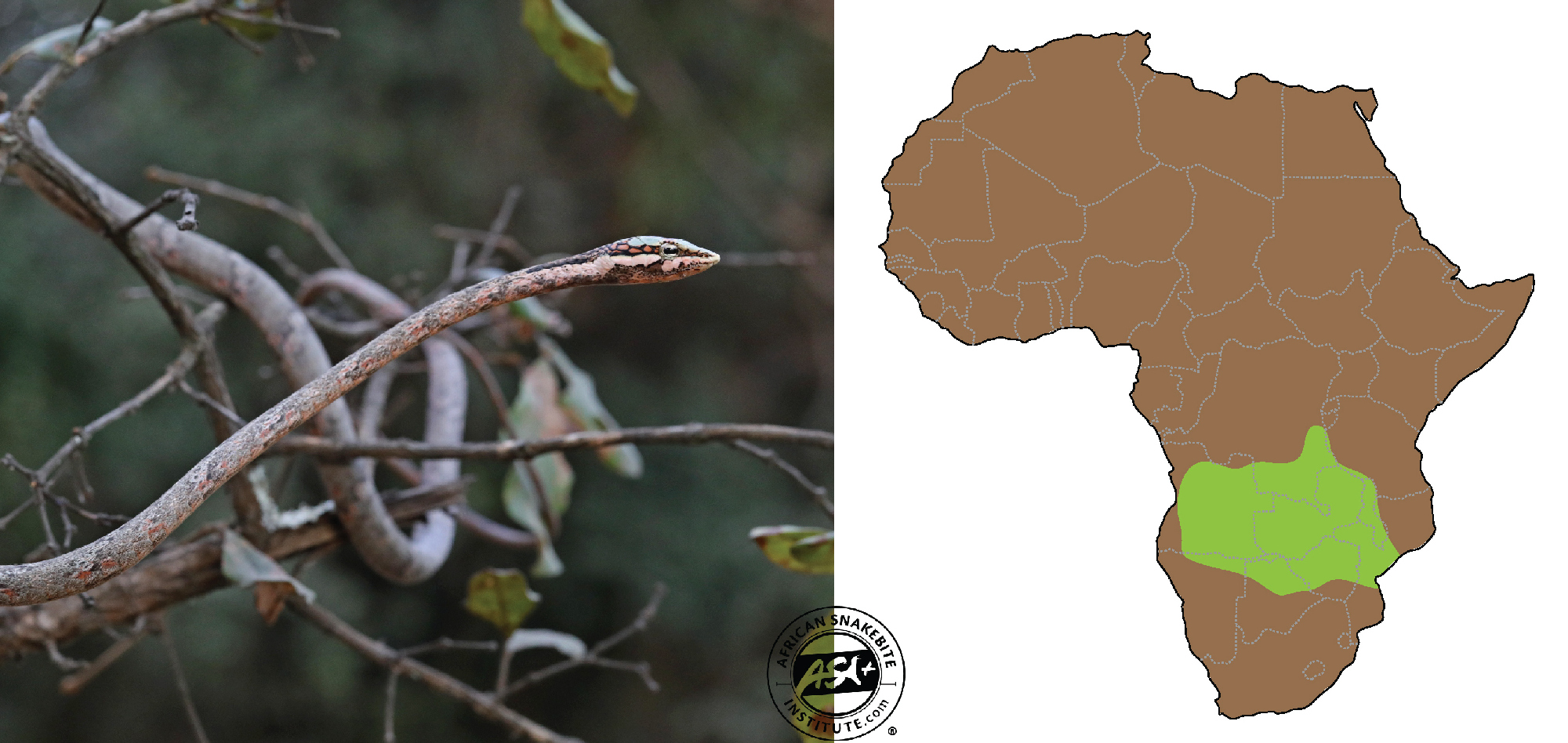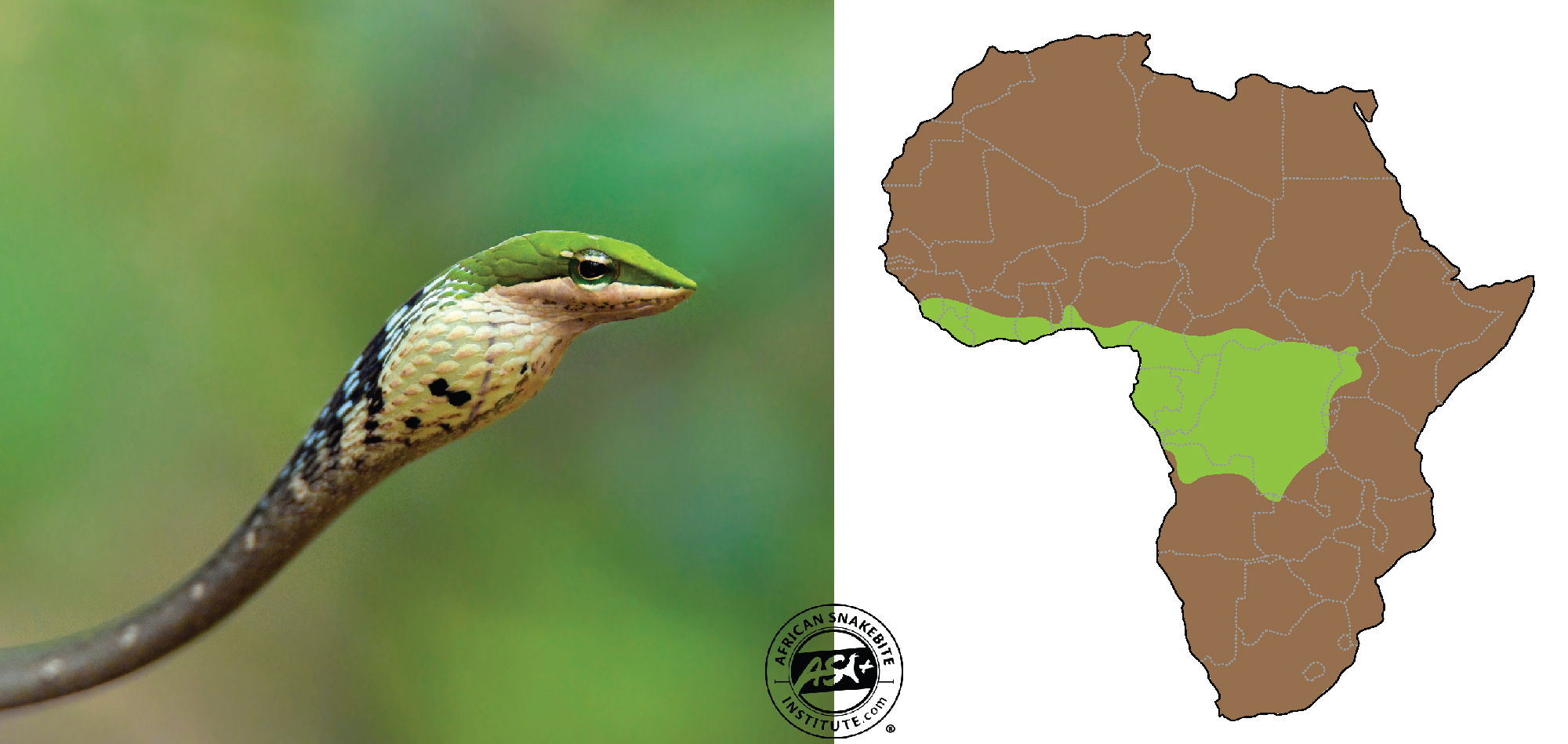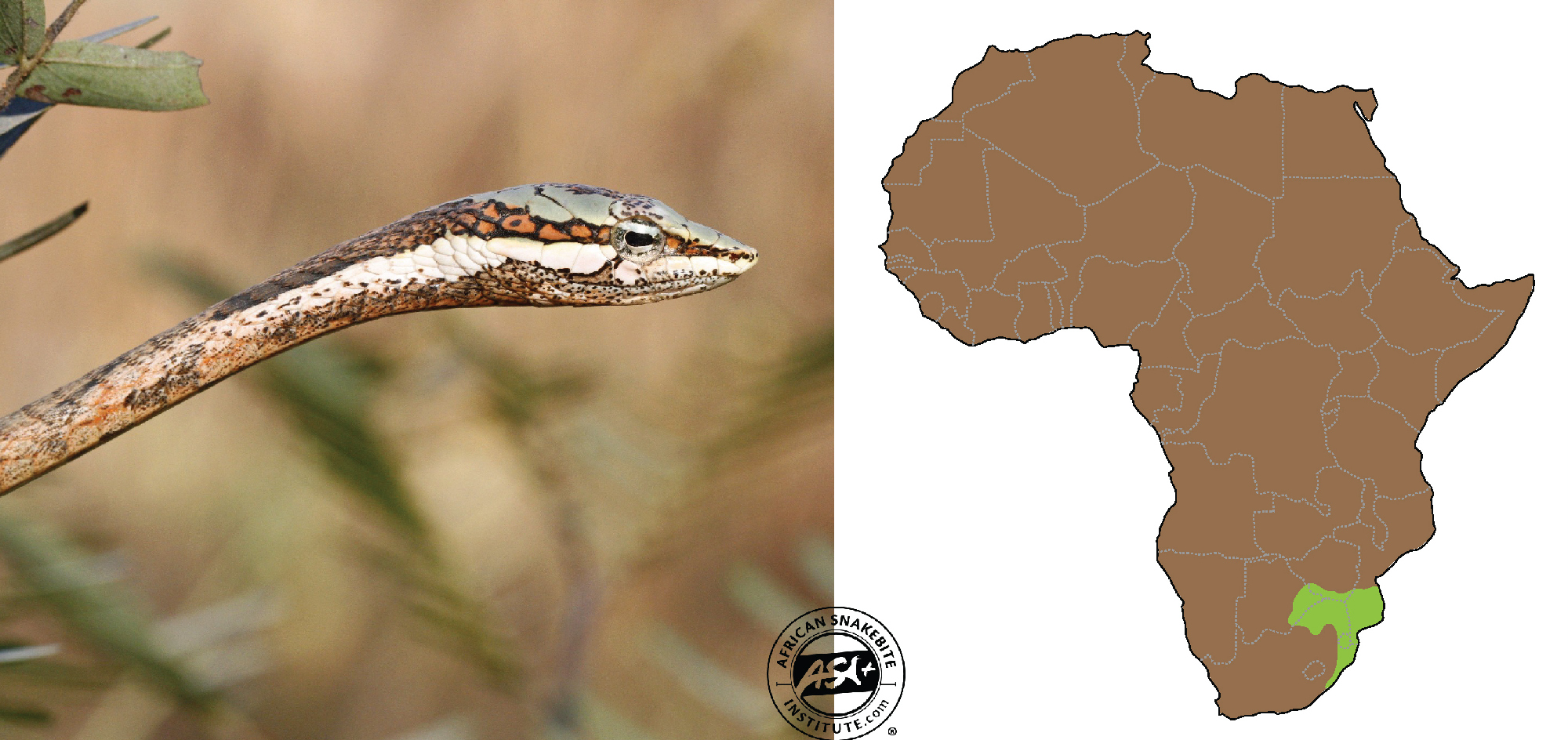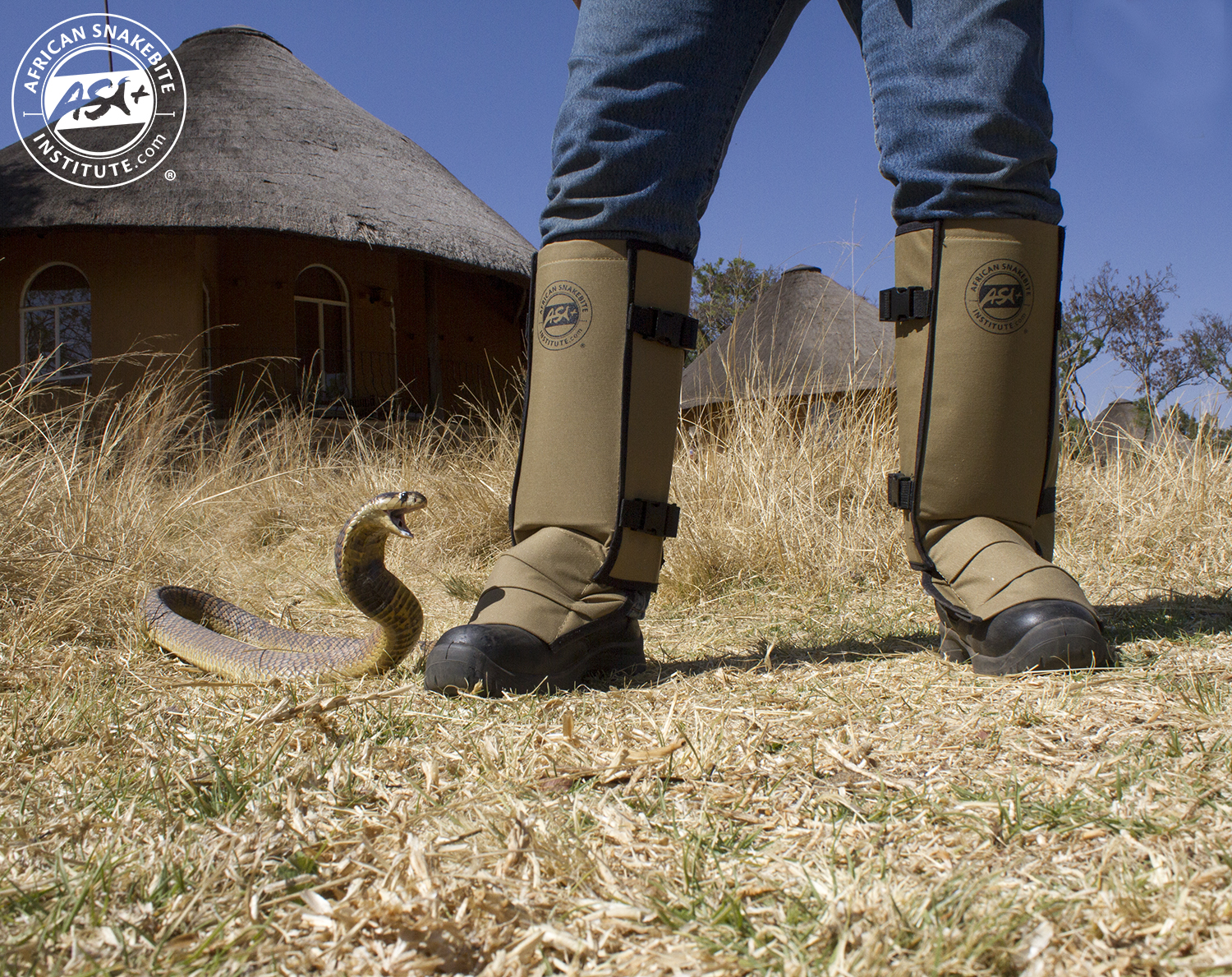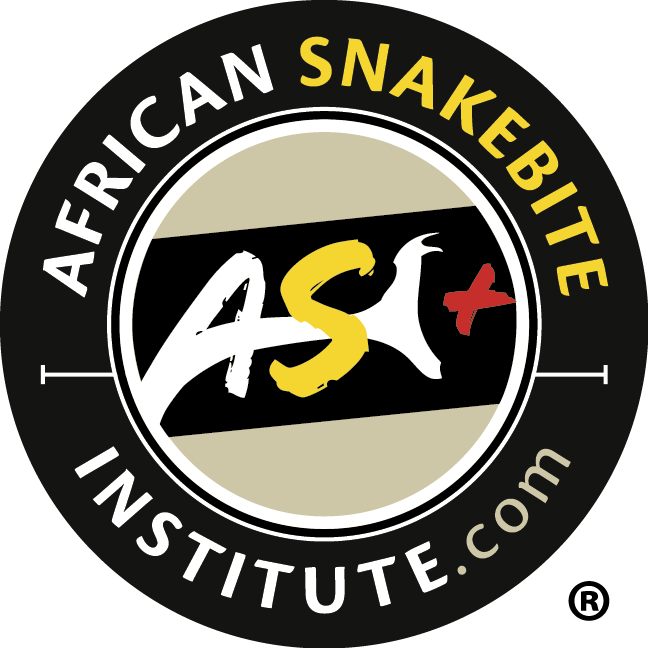Vine Snakes (previously called Twig or Bird Snakes) are widespread across Africa and are usually found in warm savanna and forested areas. There are currently four species and one subspecies of Vine Snake in Africa. The status and distinguishing features between Oates’ Vine Snake, the Southern Vine Snake and Eastern Vine Snake are not well defined, and identification remains tricky between these three species.
The Latin genus name Thelotornis roughly translates to “a desire to be cylindrical”. They are slender and elongate snakes and very cryptically coloured, usually ash-grey or grey-brown with lighter patches and dark markings across the body. The head is usually green above, notably so in the Usambara and Forest Vine Snake. The Southern, Oates’ and Eastern Vine Snake usually have a green head with a rich brown Y-shape pattern on the crown. The eye of the Vine Snakes has a distinct dark horizontal key-hole shaped pupil.


